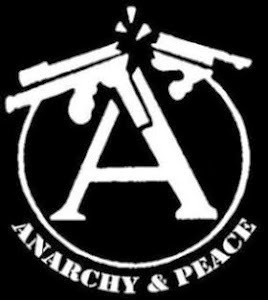Laurens Otter, born in 1930, has been active in anarchist and pacifist movements since the 1950s. I heard him speak (briefly) at a History Workshop conference in 1986, where he recounted that during the French conflicts in Algeria, French anarchists fire bombed troop trains to stop the soldiers from reaching Algeria, a militant form of direct action that he, as a pacifist, did not endorse, advocating instead non-violent direct action. Recently, his memoir, The Accidental Making of an Anarchist, has been posted online. The memoir covers a period from his youth to the 1960s. While it is sometimes difficult to follow, particularly the changing relationships between various leftist and anarchist groups and their members, the memoir covers a period when anarchism emerged from its ideological exile during the era of Soviet and social democratic domination of the left, to yet again take its place at the forefront of campaigns against nuclear weapons, imperialist wars, and the “military-industrial” complex. This excerpt deals with the attitude of the non-Stalinist left to nuclear weapons during the 1950s. The reemergence of anarchism during the 1950s and 60s is documented in Volume Two of Anarchism: A Documentary History of Libertarian Ideas.
The Left and Nuclear Weapons
Attitudes of the Traditional Left to nuclear weapons need outlining. I hope I don’t need to say that I don’t consider Stalinism part of the Left, traditional or otherwise.
Given that most of the Left had been resisters for a long time, the reaction that ‘though this was a particularly nasty weapon, it was after all just that, one weapon, only worse than others as a matter of degree, not one of kind’, was understandable.
A minority, however, had decided in the past that a war might be the lesser of two evils, particularly an anti-imperialist war or a war to stop the spread of a tyranny like fascism, and were now confronted with a new evil, an evil that seemed to be the moral equivalent of the gas chambers. By its nature nuclear weaponry could not be selective to use it to counter tyranny. Inevitably the victims of the tyranny as well as the tyrant would be made the targets – indeed the tyrant might be able to build him/herself an adequate shelter, while the victim never could.
But it was not merely a question of the nature of the Bomb itself. It may have been understandable, for those who felt war against Hitler was a lesser evil, that the American uranium bombs were made in secret. The buildings where the designs were wrought unknown, the costs not mentioned in national budgets. But when this similarly happened in Britain after the war, when [Emanuel] Shinwell (who had been [Labour Party] Secretary of State for War) showed that he had not known that the Bomb was being made under his authority and he was made to look a fool in Parliament for not knowing; when no one had a chance to vote on the matter; when it became apparent that Government must have spent many millions on building research facilities, on buying and processing uranium and manufacturing bombs, at all times hiding the costs. (Did some of the money said to have been spent on the Health Service or on education, go to make nuclear weapons? Certainly, since the then major world source of uranium was in Rwanda and Burundi, the then Soviet allegation that the East African ground nut scheme was just a cover for transporting the ore had verisimilitude.)
This was why, right back in 1950, Common Wealth [an independent socialist group] argued that the [atomic] Bomb symbolised new class divisions, what [Alfred] Rosmer and [Pierre] Monatte had christened the permanent arms economy (a term taken up by, vulgarised and then hurriedly discarded by the International Socialists), that it was essential to the neo-Colonialism exercised by both Moscow and Washington, as also the remnants of traditional Imperialism. It was a weapon held exclusively by Whites, though uranium was primarily mined in Africa. It was thus not merely just another new weapon, not merely a symptom of new class society, but the symbol of it. Obviously such an analysis gave rise to divisions as to just how important the issue was in everyday politics.
The Bomb was not only a major manifestation of violence, it symbolized the lack of democracy; not even the supposedly relevant member of the Cabinet [Shinwell] knew it was being made, so Parliament (let alone the country) was never consulted; therefore nothing appeared in the budgets – none of the costs of the enormous factory-complexes (Aldermaston, Foulness) ever figured in government building costs. Some may have gone in under a cover-all of Defence, but not in itemized Defence Ministry accounts.
Huge housing estates were built for workers and this would have appeared in Budgets as normal housing. Many workers who didn’t want to work at Aldermaston told us that they’d lived in London and asked to go on the housing lists and been refused, and then they had been told that there were houses at Aldermaston for workers there. The Groundnut Scheme in Tanzania paid for two major harbours and two major railway lines from the coast to the Rwanda-Burundi border (Rwanda-Burundi was then the largest source of uranium), so probably a large part of what was meant to be Colonial Development and Third World Aid was spent as part of the hidden nuclear weaponry budget.
There was an enormous body of horrifying facts to be learnt that would only be revealed to people who asked questions and they only asked them when alerted by the ‘symptoms’ connected to the Bomb.
Laurens Otter
Copyright in this document as that of Laurens Otter and his family, though you may quote them freely in the spirit of the Creative Commons Attribution-Non Commercial 4.0 International.







